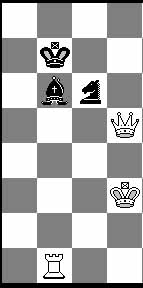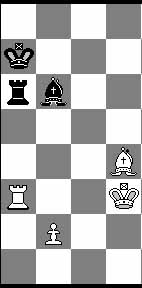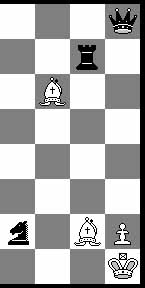



PONTI CHESS CLUB ... a brazilian Internet Virtual Chess Club.
BASIC LESSON 1: The Pin Versão em Português




Diagram # 1 #2 #3 #4
Absolute pin (#1 and #2): black pieces can't move.
Partial pin (#3 and #4): black pieces have some moves and can capture white's pieces.


#5 #6
Relative pin: pieces can move but losing material or being checkmated.
Every pin involves three essential pieces: the pinning
agent, the pinned piece and the 'target', for the sake of which the pinned
piece cannot move. Pins win material immediately only when the pinned
piece is worth more than the pinning agent. Many pins never lead directly
to a win of material, but the threat to win something and the immobilization
can often be equally valuable. This is because a pinned piece is extremely
vulnerable. It can become the focus for the piling up of attacks to breaking
point. Some pins are valuable just because they restrict the opponent's options
or cause him to lose time, or leads to immediate tactical exploitation. Pins
of unprotected pieces are usually worthwhile - they win at least one tempo
- whereas pins on well-defended pieces are rarely worth the trouble, unless
you particularly want to exchange off the piece you are pinning. Then the
pin prevents it running away.
TO REACH A "PIN" POSITION:
1. by moving your own pieces;
2. "driving" your opponent's pieces;
3. "driving" your opponent's king;
4. opening lines;
5. by check, when your opponent interposes a piece in front of the king;
6. using tactical play.
DEFENSE AGAINST PINS:
The main defensive measures against a pin are:
1. Interpose a defender between the pinned piece and the target.
2. Lend additional protection to the pinned piece (without unpinning).
3. Move the target.
4. Attack the pinning agent.